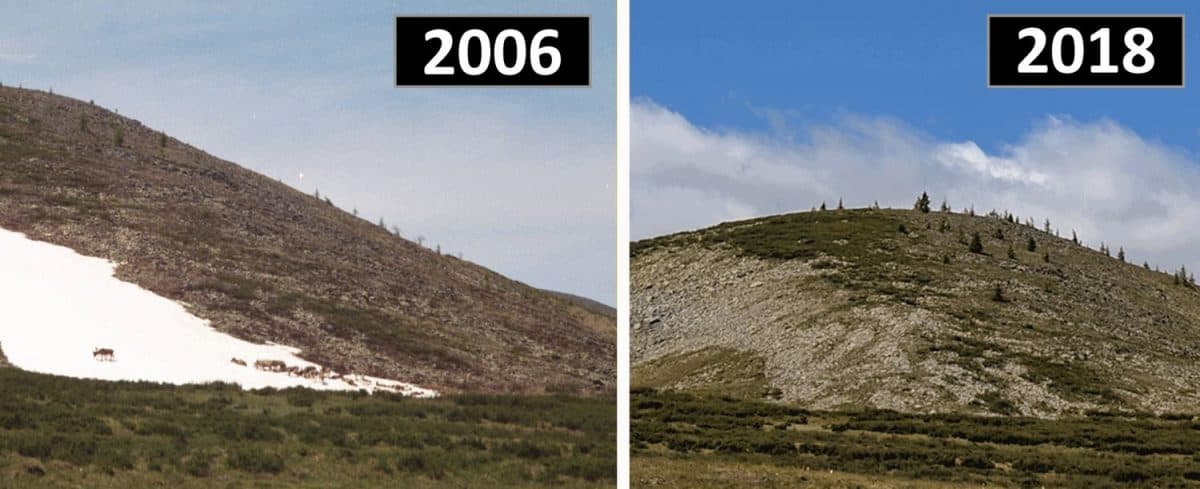
The ‘eternal ice’ of the northern Mongolian steppes is melting for the first time in memory, threatening to wipe out herds of reindeer.
Northern Mongolia’s mountainous tundra is home to ‘munkh mus’ – or ‘eternal ice’: patches of ice which remain intact even in the summer.
For the native Tsaatan people, who are heavily reliant on reindeer-herding, they provide a place for heat-stressed reindeer to cool down, as well as fresh water and a reprieve from swarms of summer insects.
But, according to a new study from the Max Planck Institute in Germany and the University of Colorado-Boulder in the US, that ice is melting fast – threatening a centuries-old way of life.
Visiting the Ulaan Taiga Special Protected Area of Mongolia, the study authors conducted a vast archaeological survey and interviewed eight Tsaatan families.
The Tsaatan, who live along the Russian border in Mongolia’s Khuvsgul province, are the world’s lowest-latitude population of domestic reindeer herders.
They explained how many of the ‘eternal’ ice patches had melted for the first time in memory between 2016 and 2018, emphasising their importance for both the reindeer and the families that herd them.
Many complained that the recent changes in climate had led to increased sickness and death among their reindeer herds.
Archaeologist William Taylor, who led the research, said: “What’s unique about reindeer herding is how closely it’s tied to this very fragile thing – the ice.
“This study shows us that global climate change is an urgent threat in Inner Asia.
“Melting ice is threatening both reindeer herding as a way of life, and the region’s cultural heritage.”
The patches of ice, which are nestled in the crooks between hills of the Sayan Mountains, also contain some of the area’s only archaeological evidence of the deeper history or reindeer herding.
Dr Taylor, who is also a curator of the University of Colorado Boulder’s Natural History Museum, added: “If we lose these unique cultural systems and ways of life, we’re losing the diversity of approaches and knowledge that we have as a species to deal with the future.”
The researchers also carried out an archaeological survey of 11 melting ice patches.
In the process they unearthed several artefacts – including two carved branches that may have once been part of a fishing pole.
Similar discoveries, the team reported, could vanish forever in the melting ice.
Study co-leader Julia Clark, an archaeologist at Flinders University, said: “Archaeology is non-renewable. Once the ice has melted and these artifacts are gone, we can never get them back.”
Dr Taylor added: “The Tsaatan are literally at the front lines of climate change.
“These are folks that contributed nothing to the problem that we find ourselves in globally, but they’re the ones paying the first price.”
The research is published today in the journal PLOS ONE.